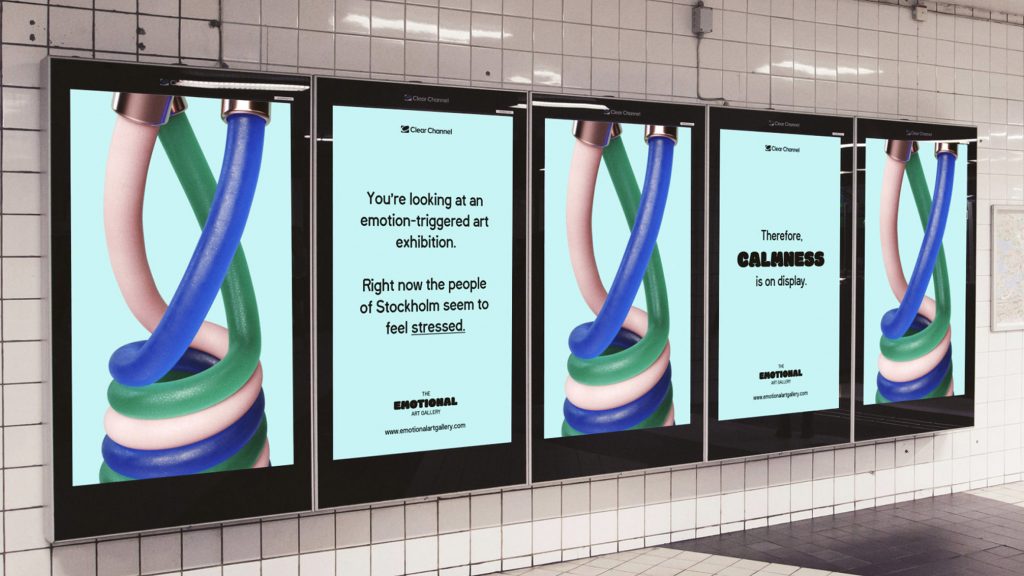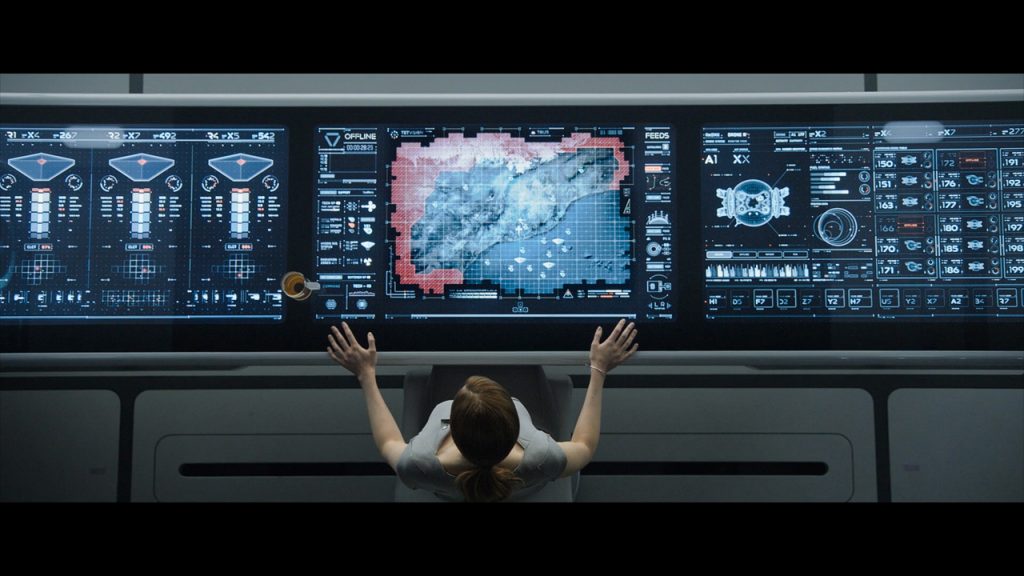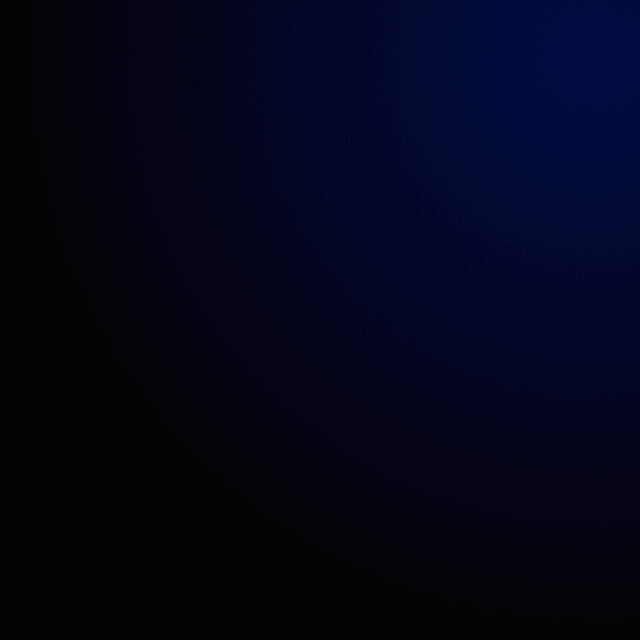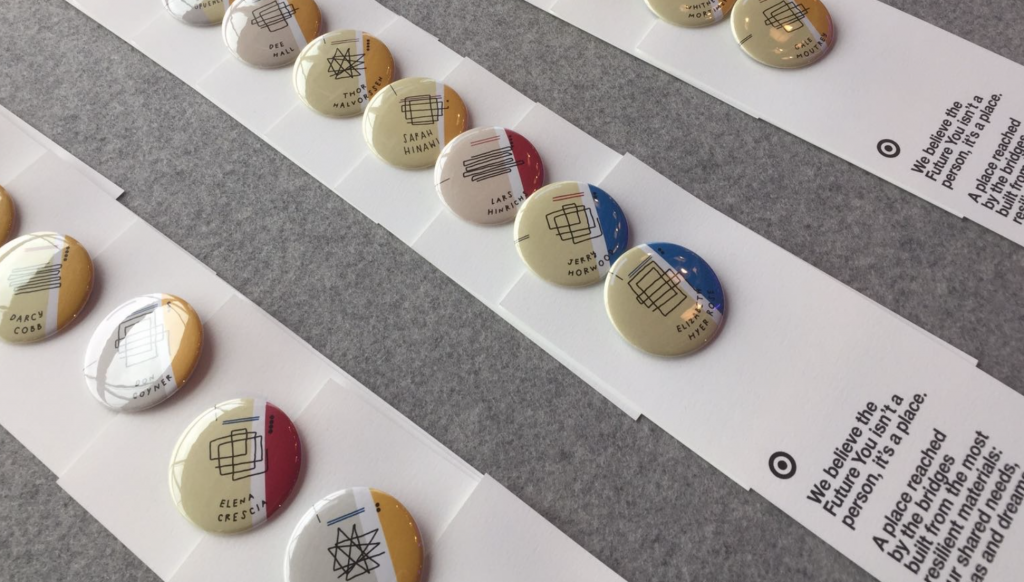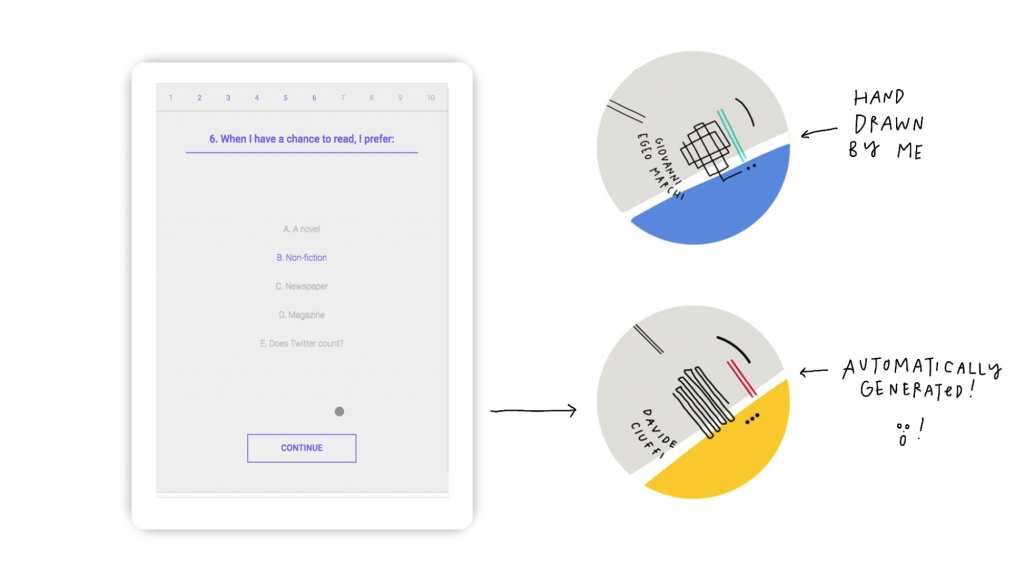I was inspired by illustrative print art that is simplistic in its style, yet also has a fashion/editorial style to it. In the piece, instead of creating parts of my face with just shapes, I used the shapes to foster an illustrative aspect to “draw” features with multiple smaller shapes overlapped and next to each other.
sketch
function setup() {
createCanvas(315.118,312.695);
}
function draw (){ fill (249,217,237);
noStroke();
triangle(0,0,0,312.69,312.69,0);
fill(224,175,206);
noStroke();
triangle(0,312.69,312.69,0,312.69,312.69);
fill(114,89,56);
noStroke();
ellipse(145.623,158.176,114.047,153.626);
fill(114,89,56);
noStroke();
ellipse(168.704,159.258,114.047,153.626);
fill(114,89,56);
noStroke();
ellipse(200.801,214.075,57.429,104.974);
fill(114,89,56);
noStroke();
ellipse(113.627,212.272,53.319,104.974);
fill(114,89,56);
noStroke();
rect(94.643,230.531,37.243,46.651);
fill(114,89,56);
noStroke();
rect(180.327,231.17,40.114,46.651);
noStroke();
fill(191,157,90);
arc(154.92,318.69,241.767,104.508,PI, TWO_PI);
fill(168,139,108);
noStroke();
ellipse(157.75,268.37,66.643,18.908);
fill(168,139,108);
noStroke();
rect(124.169,209.923,67.155,58.445);
fill(193,162,122);
noStroke();
ellipse(156.229,146.79,102.858,86.443);
fill(193,162,122);
noStroke();
ellipse(155.864,170.581,103.955,133.584);
fill(193,162,122);
noStroke();
ellipse(157.71,179.004,103.955,144.584);
fill(96,70,43);
noStroke();
triangle(116.86,146.91,122.06,141.19,127.87,142.37);
fill(96,70,43);
noStroke();
rect(121.363,140.923,13.053,1.699);
fill(96,70,43);
noStroke();
triangle(122,141.19,127.48,138.1,136.36,140.13);
fill(96,70,43);
noStroke();
ellipse(131.298,141.25,10.35,3.468);
fill(96,70,43);
noStroke();
ellipse(135.577,141.944,10.35,3.468);
fill(96,70,43);
noStroke();
ellipse(139.69,142.31,10.35,3.468);
fill(96,70,43);
noStroke();
ellipse(144.87,143.05,10.35,3.468);
fill(96,70,43);
noStroke();
ellipse(171.67,144.05,10.35,3.468);
fill(96,70,43);
noStroke();
ellipse(175.051,143.135,10.35,3.468);
fill(96,70,43);
noStroke();
ellipse(178.779,142.603,10.35,3.468);
fill(96,70,43);
noStroke();
ellipse(183.196,141.988,10.35,3.468);
fill(96,70,43);
noStroke();
rect(179.29,141.656,12.702,1.699);
fill(96,70,43);
noStroke();
triangle(178.11,140.86,187.01,138.84,192.35,141.92);
fill(96,70,43);
noStroke();
triangle(186.64,143.11,192.29,141.92,197.35,147.64);
fill(0);
noStroke();
ellipse(131.283,156.773,25.879,12.286);
fill(193,162,122);
noStroke();
ellipse(131.34,154.69,27.329,11.923);
fill(0);
noStroke();
ellipse(181.203,158.605,25.879,12.286);
fill(193,162,122);
noStroke();
ellipse(181.23,156.36,27.329,11.923);
fill(168,139,108);
noStroke();
triangle(147.52,185.12,157.75,140.08,167.97,185.12);
fill(168,139,108);
noStroke();
ellipse(157.729,185.246,20.456,17.444);
fill(193,162,122);
noStroke();
triangle(144.28,180.48,154.51,135.45,164.74,180.48);
fill(193,162,122);
noStroke();
ellipse(156.66,183.98,22.698,16.009);
fill(142,117,95);
noStroke();
ellipse(153.31,192.49,3.852,1.86);
fill(142,117,95);
noStroke();
ellipse(160.7,192.49,3.852,1.86);
fill(155,101,104);
noStroke();
triangle(132.92,211.95,154.3,204.4,156.38,210.67);
fill(155,101,104);
noStroke();
ellipse(155.988,207.234,8.63,6.824);
fill(155,101,104);
noStroke();
ellipse(160.71,207.06,8.116,7.106);
fill(155,101,104);
noStroke();
triangle(162.85,204.07,161.57,210.53,176.71,212.59);
fill(155,101,104);
noStroke();
triangle(132.92,212.24,145.16,218.32,151.58,214.25);
fill(155,101,104);
noStroke();
ellipse(158.229,217.127,28.404,6.484);
fill(155,101,104);
noStroke();
ellipse(158.64,218.32,22.805,7.554);
fill(155,101,104);
noStroke();
triangle(164.13,214.11,171.94,218.32,176.71,212.85);
fill(193,162,122);
noStroke();
ellipse(212.341,167.176,14.55,35.307);
fill(193,162,122);
noStroke();
ellipse(214.46,181.4,8.049,10.859);
fill(193,162,122);
noStroke();
ellipse(100.61,167.33,12.812,31.732);
fill(193,162,122);
noStroke();
ellipse(101.40,181.523,8.21,10.859);
fill(255);
noStroke();
ellipse(101.40,185.12,5.534,5.534);
fill(255);
noStroke();
ellipse(215.46,185.12,5.534,5.534);
stroke(255);
strokeWeight(4);
noFill();
rect(94.694,188.49,12.266,17.568);
stroke(255);
strokeWeight(4);
noFill();
rect(209.327,189.49,12.266,17.568);
}
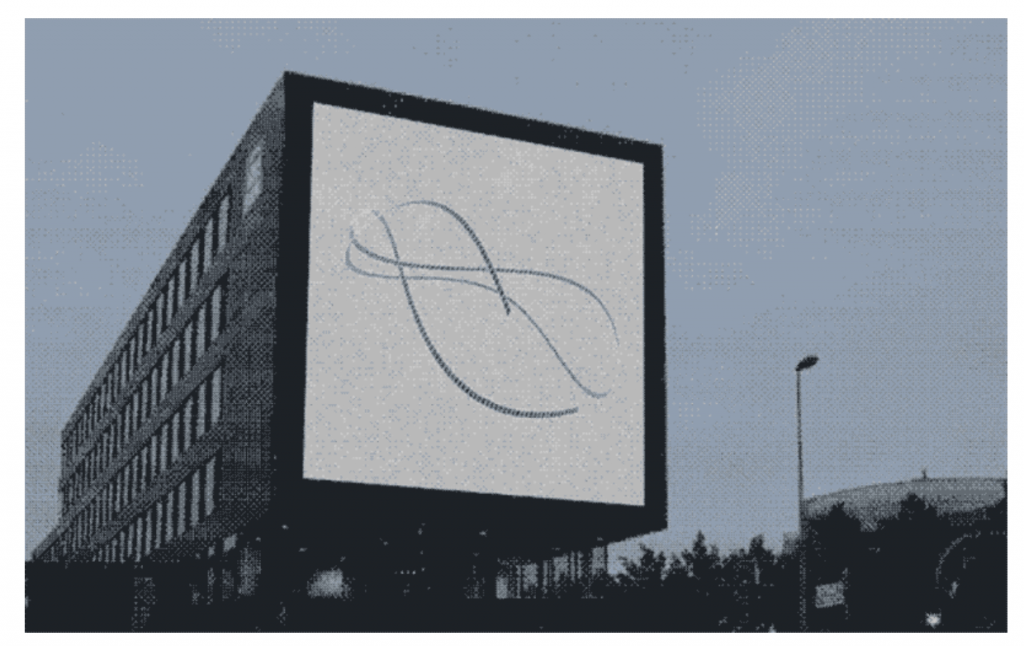

![[OLD FALL 2019] 15-104 • Introduction to Computing for Creative Practice](../../../../wp-content/uploads/2020/08/stop-banner.png)

